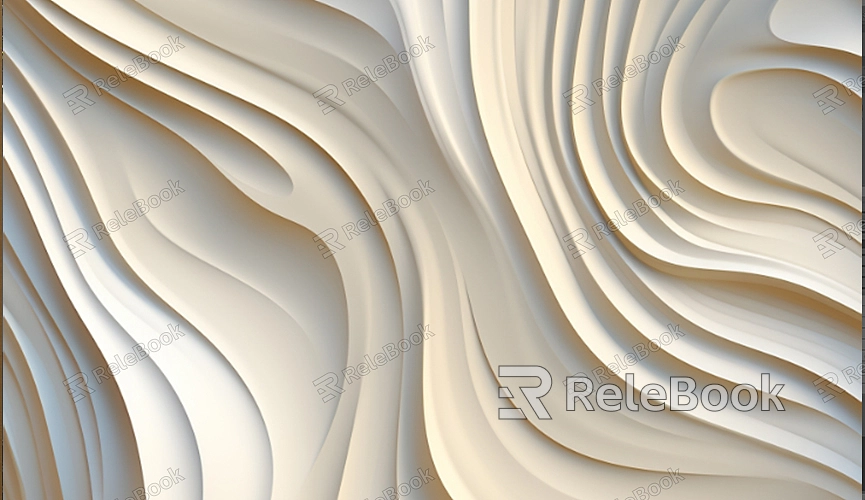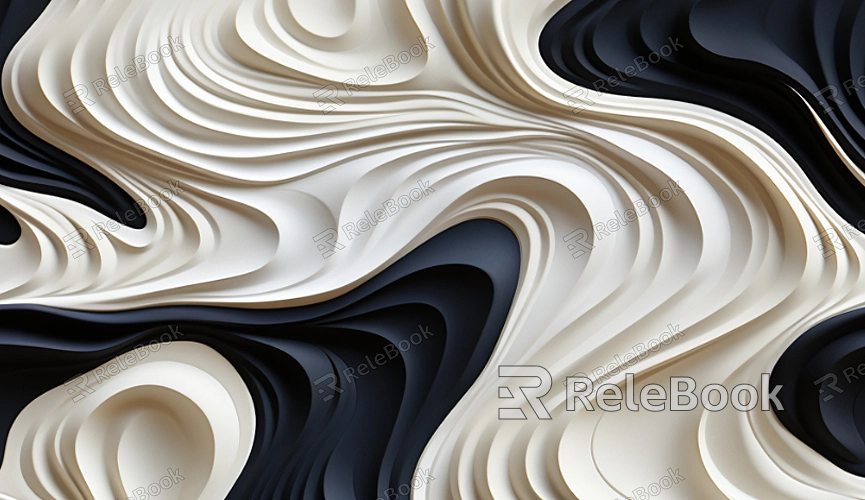What is UV Texture Mapping?

The Basics of UV Texture Mapping
In 3D modeling, every object is defined by its geometry, which consists of vertices, edges, and faces. These geometric elements create the object's shape, but on their own, they don’t contain any color, texture, or detail. This is where UV texture mapping comes into play.
1. What are UV Coordinates?
The term "UV" refers to the axes of the 2D texture plane. Unlike the 3D Cartesian coordinates (X, Y, Z), UV mapping uses two coordinates, U and V, to represent the horizontal and vertical axes of the 2D texture map. These coordinates are mapped onto the surface of the 3D model to determine how the texture wraps around the model.
How UV Mapping Works
Imagine you have a 3D model of a cube, and you want to apply the texture of a brick wall onto it. Without UV mapping, the texture might not appear correctly on the model's surface—it could be stretched, distorted, or misaligned. UV mapping allows you to take the flat texture image and map it precisely onto each face of the cube, ensuring that the bricks appear correctly on all sides.
1. Unwrapping the 3D Model
To achieve this, the 3D model must first be "unwrapped." Unwrapping is the process of flattening the 3D model’s surface into a 2D layout. Think of it as peeling an orange and laying the peel flat on the table. The resulting flat layout is called a UV map. The UV map shows how the 2D texture will be applied to each part of the 3D model.
2. Applying the Texture
Once the UV map is created, a texture can be applied to it. The texture image is placed onto the UV map, and the UV coordinates ensure that the texture is correctly aligned with the model's geometry. When the 3D model is rendered, the texture appears on the model's surface as intended.

The Importance of UV Texture Mapping in 3D Design
UV texture mapping is crucial for creating realistic and detailed 3D models. Without UV mapping, textures would not align properly with the 3D model, leading to visual artifacts, distortions, and a lack of realism.
1. Precision and Control
UV mapping provides artists with precise control over how textures are applied to a model. By carefully unwrapping the model and adjusting the UV map, artists can ensure that the texture aligns perfectly with the model’s geometry. This level of control is essential for achieving high-quality, professional results in 3D design.
2. Versatility
UV mapping is versatile and can be used for a wide range of textures, from simple color maps to complex patterns, logos, and detailed surface textures. This versatility makes UV mapping an indispensable tool in various industries, including video games, film, architecture, and product design.
3. Efficiency
Proper UV mapping allows for efficient use of texture space. By arranging the UV map intelligently, artists can maximize the use of the texture image, reducing the need for larger or more complex textures. This efficiency is particularly important in real-time applications, such as video games, where performance is critical.
Common Challenges in UV Texture Mapping
While UV texture mapping is essential, it can also be challenging, especially for beginners. Some common challenges include:
1. Distortion
Distortion occurs when the UV map doesn’t accurately represent the 3D model's surface. This can cause the texture to appear stretched or compressed in certain areas. To minimize distortion, careful unwrapping and adjustment of the UV map are required.
2. Seams
Seams are the edges where the UV map is split during the unwrapping process. If not handled properly, seams can be visible on the final model, disrupting the texture’s continuity. Techniques like seam hiding or blending can help reduce the visibility of seams.
3. Overlapping UVs
Overlapping UVs occur when multiple parts of the model share the same UV space. This can cause the texture to appear duplicated or incorrect on the model. To avoid this, UVs should be carefully laid out to ensure that each part of the model has its own unique space on the UV map.
Tips for Mastering UV Texture Mapping
Mastering UV texture mapping takes practice and attention to detail. Here are some tips to help you get started:
1. Practice Unwrapping Simple Models: Start with simple shapes like cubes or spheres to get a feel for the unwrapping process. Gradually move on to more complex models as you gain confidence.
2. Use UV Editing Tools: Most 3D software provides UV editing tools to help you adjust and refine your UV maps. Learn to use these tools effectively to improve your UV mapping workflow.
3. Check for Distortion: Always check your UV map for distortion before applying textures. Make adjustments as needed to ensure the texture appears correctly on the model.
4. Experiment with Different Textures: Experiment with different types of textures to see how they interact with your UV map. This will help you understand how different materials and patterns can be applied to 3D models.
5. Learn from Tutorials: There are many tutorials available online that cover UV mapping techniques in detail. Take advantage of these resources to learn new techniques and improve your skills.
UV mapping is an indispensable skill in 3D design, not only imbuing models with realistic detail and texture but also giving designers a high degree of precision control over the application of textures. While the learning process of UV mapping can be challenging, with practice and skill, you'll be able to create even better 3D creations. If you want to further improve your 3D design skills, please visit the Relebook website to download more high-quality 3D models and textures.
FAQ
What is the difference between UV mapping and texturing?
UV mapping is the process of unwrapping a 3D model's surface to create a 2D UV map, which determines how a texture is applied. Texturing is the application of a 2D image (texture) onto the UV map to add color and detail to the 3D model.
Can UV mapping be automated?
While some 3D software offers automatic UV mapping features, manual UV mapping provides more control and precision, especially for complex models. Automated tools can be useful for simple shapes or initial setups but often require manual adjustments for the best results.
What is a UV seam, and how can it be hidden?
A UV seam is the edge where the UV map is split during unwrapping. Seams can be hidden by placing them in less visible areas of the model or by using blending techniques in the texture to minimize their appearance.
Why do some textures look distorted on my model?
Distortion usually occurs when the UV map doesn’t accurately represent the 3D model's surface. This can be due to stretching or compressing of the UV coordinates. Adjusting the UV map and checking for distortion before applying textures can help reduce this issue.

